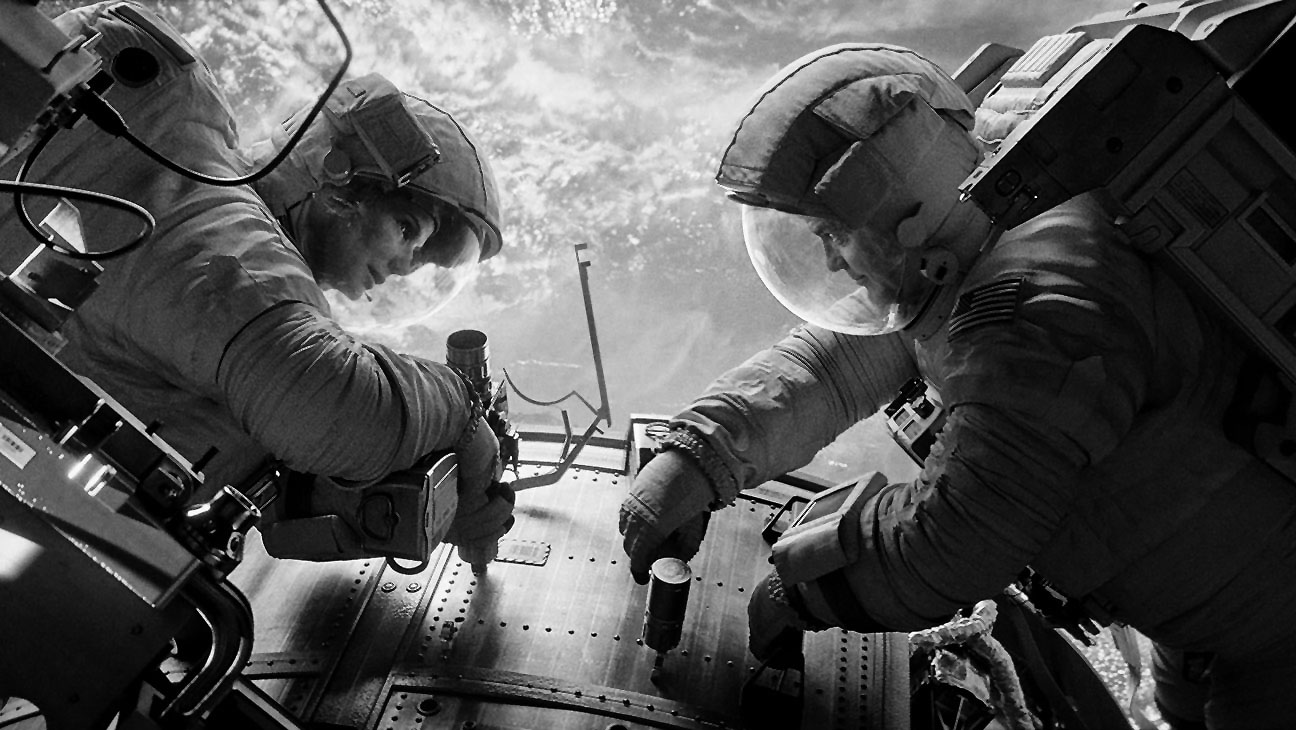For a space film, Gravity is fairly un-spacey. Sandra Bullock and George Clooney star as astronauts who must struggle to survive when a space mission goes horribly wrong. Gravity doesn’t disappoint visually—director Alfonso Cuarón’s famous long takes seem particularly amiable to outer space—but the film repudiates much of the intellectual legwork done by previous sci-fi masterpieces. Insofar as Gravity’s message is being reduced to humanity finding itself in adversity, the film is as thematically sophisticated as a made-for-TV space horror. But such a criticism may mean little to some. As a straightforward action flick, Gravity is certainly meritorious, with some flashy technical bells and whistles thrown in.
Astronauts Ryan Stone (Bullock) and Matt Kowalsky (George Clooney) are in the midst of a spacewalk when news arrives that a recently-destroyed satellite has caused unexpected debris fields. In no time, space shrapnel is punching holes through their space shuttle (and, in particularly gruesome fashion, their shuttlemates).
To say much more would go beyond the film’s relatively tight-lipped trailers. But know that Gravity is narratively taunt, with a distinctive ability to wring impressive levels of tension from its premise. Cinematographer Emmanuel Lubezki recieved acclaim for his acrobatic camerawork in Tree of Life, and the space environment—in which there is no ‘up’ or ‘down’—provides the perfect setup for Lubezki to repeat his magic. The mindboggling depth of space itself is similarly well-captured, aided with perhaps one of the rare instances in which 3D is actually a benefit (though I did attend the IMAX screening, which tends to do 3D better).
Where Gravity burns up is in its screenplay, and by extension, the performances. Clooney ramps up his charm machine to full throttle, but receives limited screen time (and a late appearance seems gimmicky and forced). In contrast, Bullock’s character is underwrit for a protagonist, resulting in a mundane performance, save for a triumphant climax.
What’s frustrating is that Gravity had so much potential. Other directors have done more, with less of a premise— Rodrigo Cortés’ Buried comes to mind— whereas Stone’s character starts off interesting and becomes adulterated and bland. We’re introduced to a fascinatingly lonely woman, one lonelier on earth than in space. Instead of growing in complexity, she grows flatter. Similarly, the first half of the story floats the idea that while space is inhospitable, earth itself may not be much better. This relatively fresh thematic territory is quickly abandoned. Space is death. Earth is life. On with the show.
Like space itself, Gravity may leave viewers feeling a bit cold. Many critics now like to play a game when entering a Cuarón film: counting the seconds until the next edit. Cuarón’s Children of Men (2006) was impressive for featuring long takes that dazzled the mind and redefined what was cinematically possible. But in this case, optical feats of strength don’t add up to a great movie. Gravity is still a decidedly entertaining action film. But considering the output to be expected from the profound storyweaver that gave the world Y Tu Mama También, Gravity leaves the film fan yearning for a little more.
Gravity had its North American premiere at the 2013 Toronto International Film Festival, and is set to be released in theatres Oct. 4.









